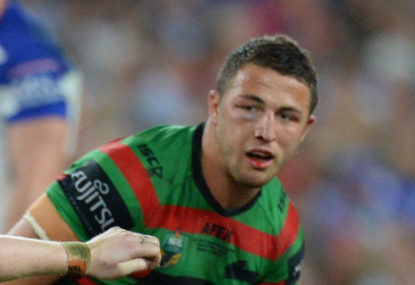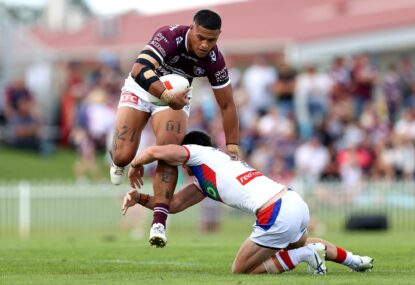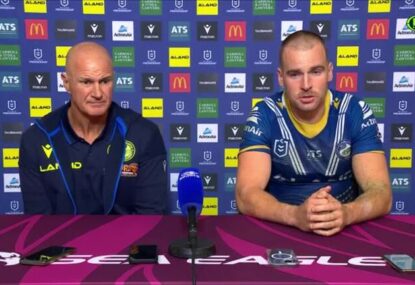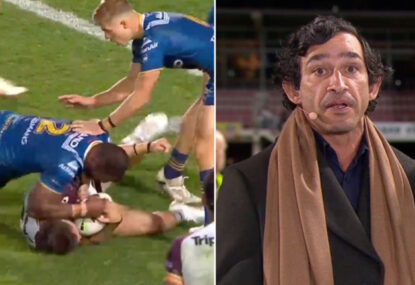One of the major buzzwords in international sports today is concussion. Concussion controversies are present in almost every contact sport around the world and it doesn’t appear as though they are going anywhere anytime soon.
Concussions are something I have wanted to write about for a while, but I haven’t. Why? Because it’s difficult to talk about. This is exactly what is happening with major sporting organisations around the world – it was far easier to sweep the issue under a rug than to bring it into the spotlight.
Out of sight, out of mind. Unfortunately for organisations, a concussion never leaves a sufferers mind.
Concussions are scary. The reason we think they are scary is because we know so little about them.
We don’t fully know the lasting effects of repeated concussions. We still don’t know if someone is more likely to suffer a concussion after suffering a first.
We still can’t definitively confirm if the damage caused by the second is worst than the first, the third worse than the second and so on. While there is plenty of evidence pointing towards the fact that repeated hits to the head cause Chronic Traumatic Encephalopathy (CTE) we still don’t know for sure if concussion is the only cause of this terrible disease.
Part of the problem with concussions and investigating their effects is that doctors are dealing with brains – a very complex organ.
It is not possible to simply take an x-ray, diagnose a broken arm, stick a cast around it and say it will be healed in six weeks’ time. Doctors can only definitively confirm CTE postmortem after a sufferer passes away.
As a result, the vast majority confirmed cases of CTE come in deceased athletes, the people who have donated their brains to the study of the disease.
It is suspected the occurrence rate among professional athletes is far higher than the general public, but as so few studies have been conducted to date, we can’t be sure.
Until enough studies have been done that examine a variety of different factors, including genetics, lifestyle, alcohol and drug use, preexisting mental and physical medical conditions and form of employment, we cannot know for sure that CTE is caused solely by repeated hits to the head.
Nevertheless, doctors have formed what seems to be a fairly credible hypothesis and we must take note.
Contact sports are a hyper-masculine environment. There is peer-pressure everywhere and teammates have a special bond.
What we see in the best, most cohesive teams is a willingness to go into battle for each other. A willingness to sacrifice one’s body for the sake of the team. It is an unwritten rule that the man standing next to you will do everything he can to deliver a victory and that you will do exactly the same for him.
We saw this in the NRL grand final as Sam Burgess risked serious injury, even blindness, to play 80 minutes with a broken cheekbone and eye socket, to lead his team to a premiership and himself to the Clive Churchill Medal.
We have seen it numerous times in State of Origin. Players have played with concussions, with Dallas Johnson being a notable example. The vast majority of today’s players are aware of and understand the risks of concussion, that it can possibly cause serious health issues later in life, yet they are unwilling to leave the field after suffering one.
This is due primarily to two reasons, a fear of letting down their teammates and a fear of looking weak, with no externally visible injury present.
In the heat of the battle, you don’t think about what might happen to you in 50 years’ time, you just think about winning the match.
I’ve been in that position before and leaving the field doesn’t enter your mind. To make matters worse, numerous former NFL players have revealed that they were pressured into returning to play by coaches and team representatives.
If players are unwilling to go off, sometimes it is up to the teams and organisations to force them off. But with coaches and organisations not just sending concussed players back onto the field, but with reports that leagues were deliberately withholding information, the lawsuits began.
There is a big difference between a player understanding the dangers of a concussion and choosing to play on and a player not knowing what a concussion is and being sent out to play by a team who understood the possible dangers.
The debate is currently raging as to whether players should have the right to choose whether to stay on the field or not, but one thing is for sure, teams don’t have the right to force a player to remain on the field.
Yet that is what Michael Maguire pressured Sam Burgess into doing in the grand final, not explicitly, but Maguire revealed the message he sent out to Burgess was a simple two words ‘John Sattler’.
As soon as he heard these two words, Burgess knew he was expected to stay on the field. I know Burgess did not have a concussion, or at least we don’t know if he did or not, but the point remains.
Under the NRL’s concussion protocols, Burgess’ brother, George Burgess was removed from the field with a suspected concussion and subsequently re-entered after he was cleared of a concussion.
Some members of the media have expressed outrage that Burgess was allowed to re-enter the match after seeing footage of a very unsteady George Burgess leaving the field. Yet those members of the media are not doctors and they weren’t watching the Rabbitohs team doctor, who is highly respected, conduct the test.
The Rabbitohs’ team doctor is required to submit a report outlining the results to the SCAT3 assessment and it is unlikely he will risk being deregistered by the NRL and his reputation by lying in this report.
The fact of the matter is that we don’t know enough about concussions to make any definitive statements or hard and fast rules. As a result, sporting organisations must err on the side of caution.
We suspect that it is potentially very risky to send a concussed player back to the field of play and as such, most sporting organisations have initiated rules that allow a player to be removed from play in order to diagnose a concussion and if the player is concussed, ensure they don’t return to play.
The NRL has done this by implementing new concussion protocols prior to the start of the 2014 season, as did the IRB with the introduction of the Head Bin in 2012.
It is all well and good introducing rules to prevent a second concussion from occurring, but sporting organisations also need to come up with methods to prevent the first concussion from occurring.
There have been numerous suggestions thrown around to combat this growing issue and to their credit, after years of sitting on their hands, sporting leagues are starting to make smart rule changes.
Hits to the head have almost been completely eradicated from contact sports, with accidental contact the last remnant. Unfortunately accidental head clashes and knees to the head are near impossible to remove from a contact sport without removing all contact from the game.
The only sports in which players intentionally lead with their head are those in which the athletes wear helmets, mainly American football and ice hockey. In the others, as Tatafu Polata-Nau has shown us, it is foolish to do so and no, James Graham was not leading with his head in the grand final – even if it was a hell of a weapon.
Helmets are a very complicated matter altogether. There a numerous different varieties of helmets worn in multiple codes, with each having varying degrees off effectiveness.
The headgears worn in rugby league, union and sometimes soccer and AFL are soft, padded items that fit snuggly around the head. While many young children are required to wear one, there are numerous differing opinions on their effectiveness.
It is entirely possible to be concussed wearing a headgear and many doctors believe that there is no evidence to suggest that a headgear will lower the chances of suffering a concussion.
I’ve been told by doctors, and numerous studies have confirmed this, that while a mouth guard will help disperse the impact of a blow to the head, and thus reduce the likelihood of a concussion, the only thing a headgear will do is prevent any head wounds.
Headgears are doing very little harm and I have no issue with youngsters being required to wear them, but it is evident that the mandatory use of headgears at the professional level will have little impact on reducing the prevalence of concussions. In fact, the reason most rugby union players even where one is to protect the ears in a scrum, hence the term scrumcap.
While it is unlikely that a headgear is doing damage to rugby players, there is every possibility that helmets are doing significant damage to American football players. American football helmets are hard plastic hats that players use as weapons.
Not only are players doing harm to themselves by leading with their heads, they are inflicting harm on their opposition by ramming into them at full speed with a weapon. The NFL has taken a number of steps to prevent players from tackling with their heads and this has to be commended, even if it took far too long.
Leading with the helmet has almost been completely removed from the game and coaches are actually teaching players to tackle with their shoulders, something they have seemingly failed to do for many years.
However, there are situations in which players are still able to lead with the helmet, tackling running backs for example, and there is really only one way to completely remove this, to put a soft exterior on all American football helmets.
It has been done before, and quickly abandoned due to their poor aesthetics, and could easily be done again. When it was attempted in the past, it was by just one or two players who were trying to save their careers, the NFL could very easily introduce a rule to force players to where helmets with a padded exterior.
The ugliness would very quickly be forgotten, especially when the general public knew that it was in the best interests of the players.
Such a move could potentially save the sport in America. There are a growing number of parents who see the dangers of American football and choose to withhold their sons from the sport.
If parents know that their children will be wearing a soft helmet that reduces the impact of knocks they will be more likely to allow their children to play.
Sports leagues around the world have spent hours upon hours educating their players of the dangers of concussions. They have taught them to inform their trainers and coaches if they experience some of the signs of a concussion, and they have been taught to always err on the side of caution.
For this they need to be praised. And as the scientists and doctors discover more about this complex issue, I’m sure they will continue to take more steps to protect their players.
Sporting organisations have a very tough balancing act on their hands. They need to balance the safety of their employees with the demands of their consumers.
In equilibrium supply equals demand and sporting organisations have to be careful that they stop supplying what we, the viewers, demand. The vast majority of fans demand a brutal, gladiatorial clash. There are thousands of big hit highlight reels on YouTube for rugby league, rugby union, American football and ice hockey, people watch contact for the combatant nature.
If they want a less combative sport they go and watch soccer.
However, it’s all well and good to say that the people want brutal combat so that’s what we are going to give them, yet it’s not so clear cut. Society changes, slowly, but it changes. Look at the gladiators of ancient Roman times, back then the spectators wanted the competitors dead. Yes, it was win or die trying.
Eventually societal expectations changed and evolved overtime. Society will continue to evolve in the coming centuries and eventually society will cease to enjoy sports like rugby league.
Sporting organisations need be proactive to ensure that their sport doesn’t go down the gurgler when societal attitudes change, but they can’t make decisions that alienate their fans. It’s a fine balancing act and one that NRL CEO Dave Smith attempted to tread when he banned punching last season. He alienated a lot of fans, yet still attempted to appease those who found punching despicable.
Concussions are scary. There is a lot of evidence to suggest that players of contact sports are setting themselves up for an early death. Yet there is no clear-cut evidence to confirm this.
For the moment, sporting organisations need to act proactively, they need to suspect the worst case scenario will eventuate and take measures to prevent this. After spending a lot of time with their heads in the sand, sporting organisations around the world have finally realised that measures need to be taken to prevent concussions, whether it be out of concerns for player safety or fears of a major lawsuit.
However, this issue is not just about sporting organisations being proactive, it is also about athletes looking after their bodies and spectators monitoring their expectations.
It is a complex issue that needs more balanced discussion, not sensationalist claims that only present one side of the argument, and hopefully these discussions will continue into the future.
Twitter: @fromthesheds




































































































